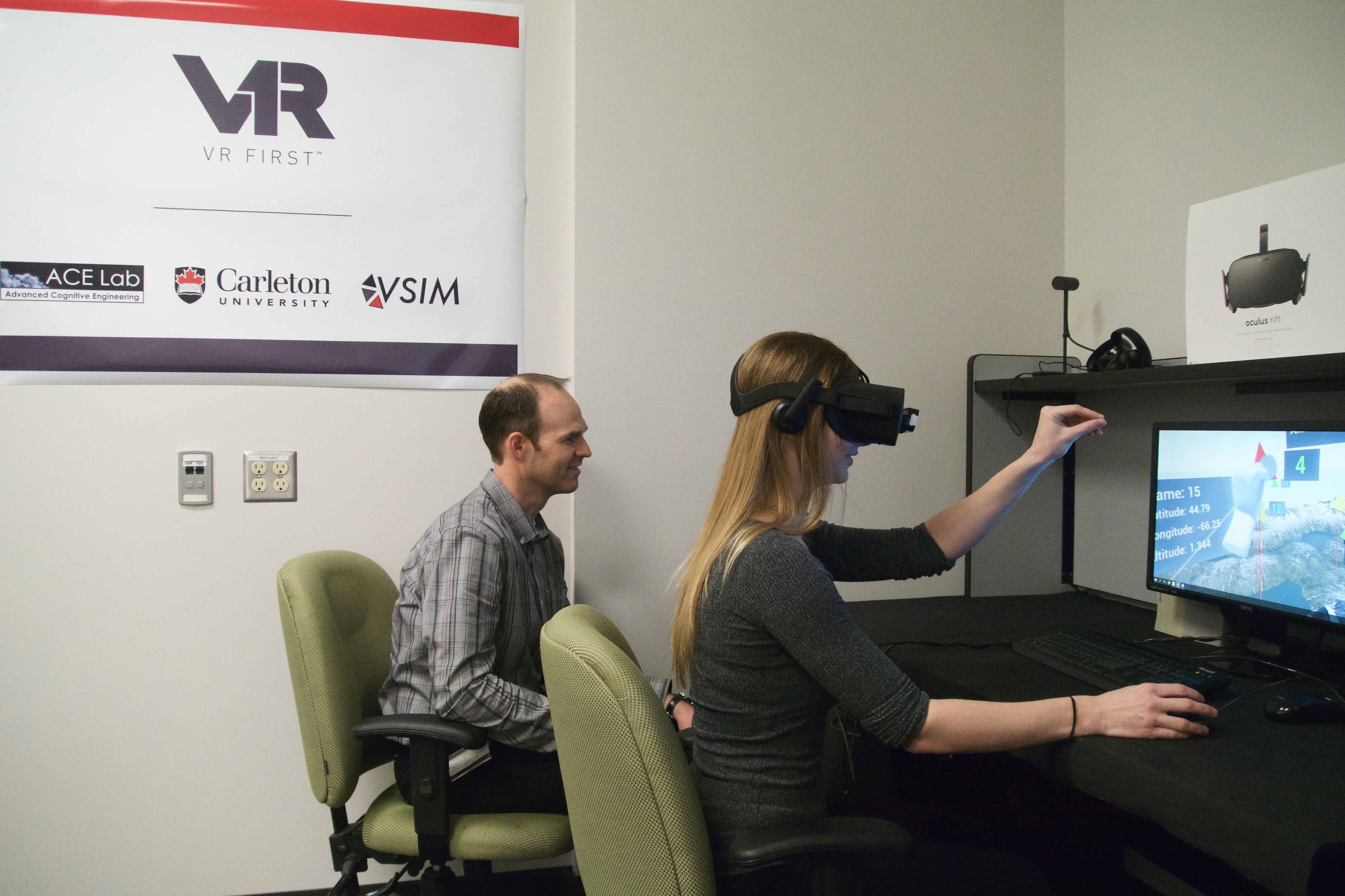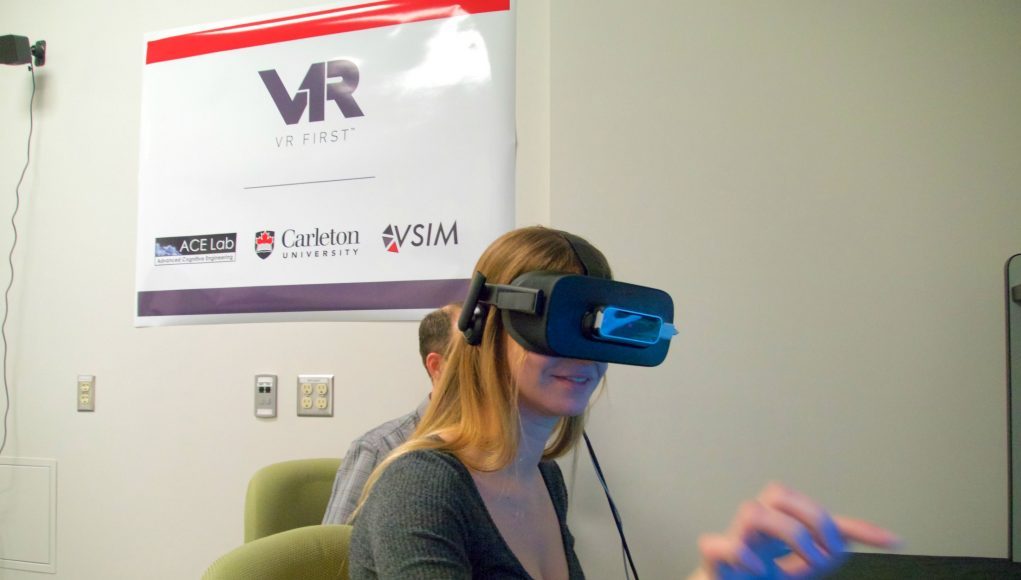VR First, the global initiative to seed academic institutions with VR/AR hardware and software, today announced that it’s nearly doubling the number of its VR labs in universities and science parks across the globe by the end of 2017. With currently 26 labs operating in the United States, Europe, Asia and Oceania, VR First is bringing the number to 40 labs by the end of year.
Unveiled last January by Crytek, the now fully-independent VR First program is designed to foster innovation by not only creating independent VR labs where they once weren’t, but by also converting PC labs into AR/VR-ready facilities—and it’s doing it in top universities and science parks across 23 countries including Purdue University, University of Florida, University of Southern California Viterbi School of Engineering, Oklahoma State, and Vancouver Film School.

The idea is to stimulate development in VR where questions can be answered best, and in a place where projects can be developed without the heavy startup cost associated with PC VR.
Currently VR First is boasting more than 50 projects in development at the labs, and not just games. In fact, games only account for 35% of projects underway, as the rest are focused on fields like psychology and neuroscience (12%), education (7%), tourism (7% ), and architecture and real estate (6%). Development is divided evenly across the HTC Vive and Oculus Rift platforms, each accounting for 31% of projects created, with other major VR platforms such as Samsung Gear VR, OSVR, and Daydream rounding out the bottom numbers. While the program was principally incubated by Crytek, students working in VR First labs tend use Unity (48%), followed by Unreal (20%) and then CRYENGINE (14%).

AR headset distribution is much more dramatic, as students are mainly developing on Microsoft HoloLens (43%), with Google Glass, Vuzix AR headsets, Epson Moverio, Meta AR Dev Kits making up the rest of the pie chart. A full 25% of projects however are reported to be using ‘other’ hardware platforms, but considering the massive number of Google Glass-style headsets out there, it’s no wonder they didn’t name them all.
With a growing reach comes a bigger voice too, so VR First is also helping to push a new Institute of Electrical and Electronics Engineers (IEEE) standard, called IEEE P2048.5, which focuses on setting quality assurance and testing standards for VR/AR hardware in regards to fully immersive environments. To that end, VR First is also partnering with benchmarking company Futuremark to support benchmarking requirements through its standardization efforts. Through its Lab Renovation Program, VR First is promoting the adoption of these new standards by lab partners, governments and science parks.

“The progress VR First has made in just its first year, from 26 labs open and more coming soon, to its growing technology partner network and the unveiling of dozens of VR projects developed at VR First Labs, is excellent momentum to democratize the innovation VR/AR landscape,” explains Ferhan Özkan, co-founder, VR First. “With more than 65% of universities planning dedicated VR labs, plus science parks and governments interest to do the same, continued growth of our efforts is without question. We invite all industry technology providers and stakeholders to join us in this meaningful program.”
The program, which also includes a network of participating schools, has over 500 universities and science parks worldwide. The broader-reaching network is designed to help developers convert ideas into business opportunities and introduce them to established industry partners.
“VR First is fully independent, and supports VR First labs no matter their choice of engines or platforms, and welcomes all hardware and software providers. We believe that if you have a noble vision like “Democratization of VR/AR Innovation,” it deserves to be protected from any competitive sacrifice. This vision could only be achieved with a vendor-neutral approach,” added Özkan.
VR First Institutions (including new openings)
- Aalborg University Copenhagen, Denmark
- Academy of Art San Francisco, USA
- Bahçesehir University (BAU), Turkey
- California State University Monterey Bay, USA
- Canterbury University, New Zealand
- Carleton University, Canada
- Comenius University Bratislava, Slovakia
- Dania Academy of Higher Education, Denmark
- Darmstadt University of Applied Sciences, Germany
- Doña Ana Community College, USA
- Graz University of Technology, Austria
- HTW Berlin, Germany
- Ilia State University, Georgia
- Kajaani University of Applied Sciences, Finland
- LLC Technology Companies Development Center, Ukraine
- Manchester Metropolitan University, UK
- Middle East Technical University, Turkey
- NHTV Breda University of Applied Sciences, Netherlands
- North Carolina State University, USA
- North Metropolitan TAFE, Australia
- Oklahoma State University, USA
- Paneuropean University Bratislava, Slovakia
- Purdue University, USA
- Rochester Institute of Technology, USA
- RUBIKA, France
- Sogang University, South Korea
- South East European University, Macedonia
- State University of New York at Oswego, USA
- Tallinn University of Technology, Estonia
- Universität Hamburg, Germany
- Universität Heidelberg, Germany
- University College Cork, Ireland
- University College London, UK
- University of Florida, USA
- University of Southern California (USC), USA
- University of the Aegean, Greece
- Vancouver Film School, Canada
- VIGAMUS Academy, Italy
- Vilnius Gediminas Technical University, Lithuania
- Warsaw University of Technology, Poland
Update 04/13/2017: the article was updated to clarify that VR First initially incubated under Crytek, but is now a fully independent program.







